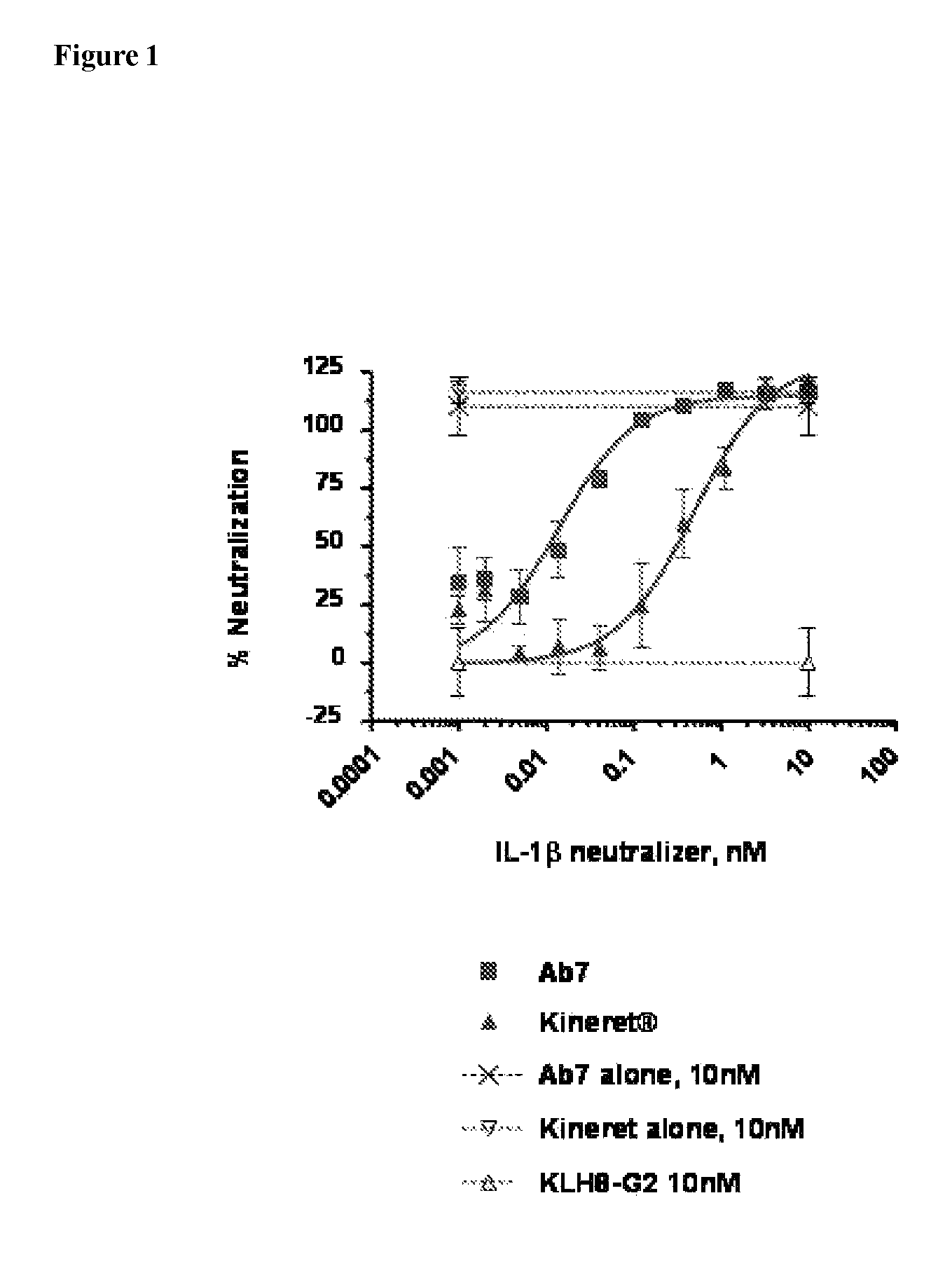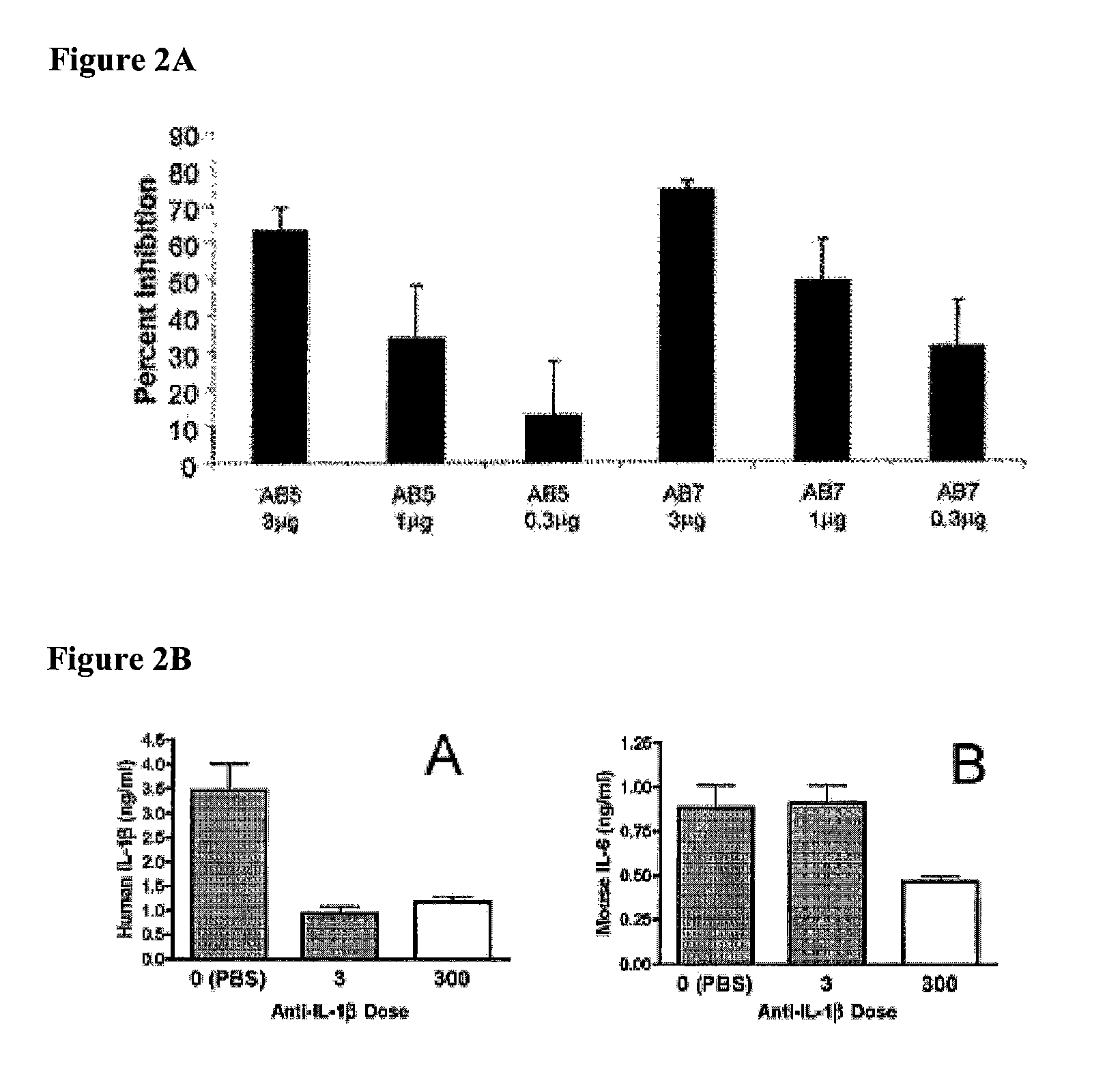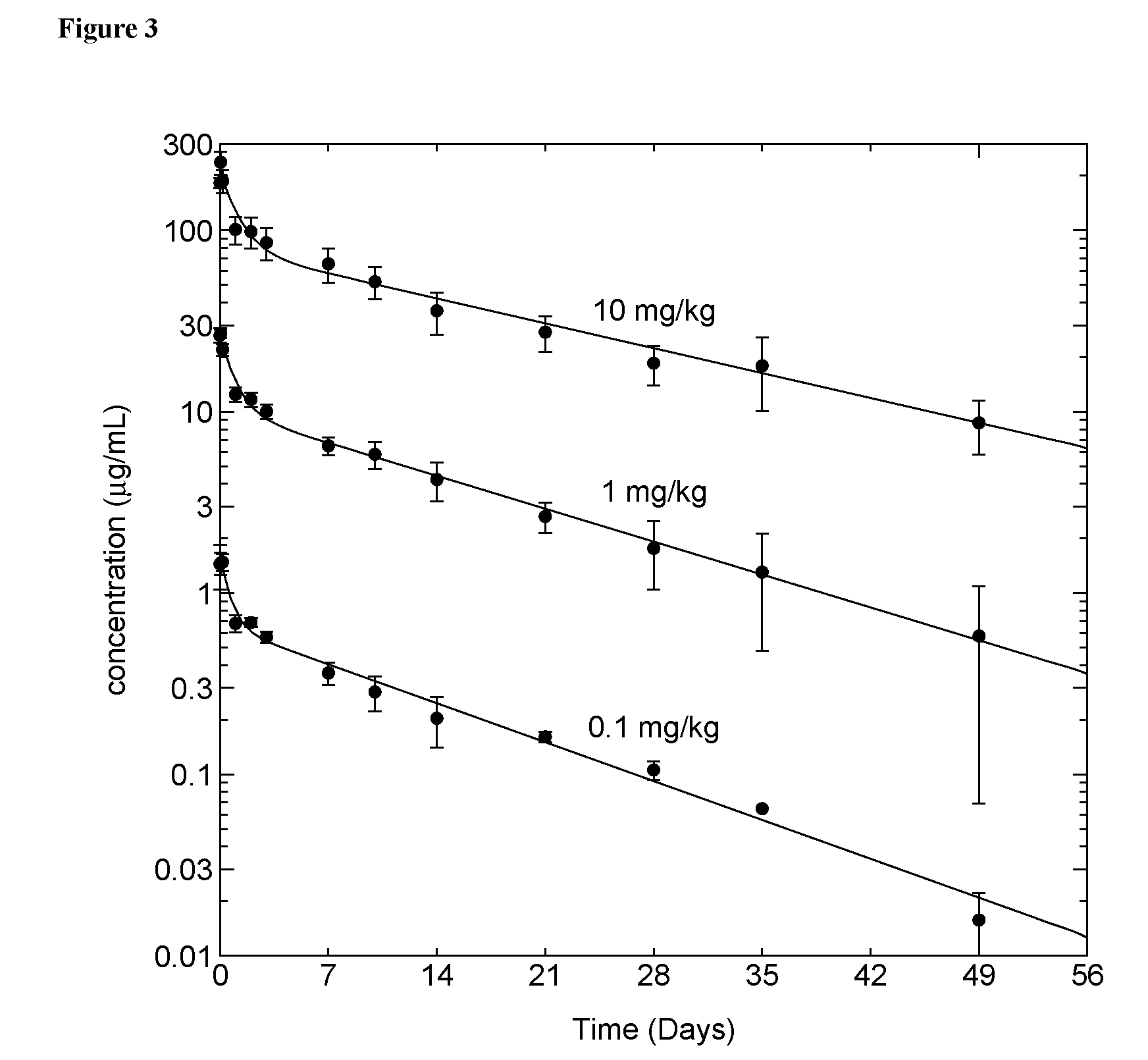Methods for the treatment of IL-1β related diseases
a technology for il-1 and related diseases, applied in the field of methods for the treatment of il-1 related diseases, can solve the problems of increased risk of il-1, so as to reduce the amount, frequency or duration of treatment, and reduce the effect of treatment with at least one active agen
- Summary
- Abstract
- Description
- Claims
- Application Information
AI Technical Summary
Benefits of technology
Problems solved by technology
Method used
Image
Examples
example 1
Inhibition of IL-1β Using a High Affinity IL-1β Antibody in an In Vitro Cell Based Assay, with IL-1 Induced Production of IL-8 as a Read-out
[0224]The inhibitory effect of the IL-1β-specific antibody was compared to a non-antibody inhibitor of the IL-1 pathway, Kineret® (anakinra), which is a recombinant IL-1 receptor antagonist. Fresh, heparinized peripheral blood was collected from healthy donors. 180 μl of whole blood was plated in a 96-well plate and incubated with various concentrations of the antibody AB7 (U.S. application Ser. No. 11 / 472,813, WO 2007 / 002261) and 100 pM rhIL-1β. For Kineret®-treated samples, Kineret® and rhIL-1β were combined 1:1 prior to mixing with blood. Samples were incubated for 6 hours at 37° C. with 5% CO2. Whole blood cells were then lysed with 50 μl 2.5% Triton X-100. The concentration of interleukin-8 (IL-8) in cleared lysates was assayed by ELISA (Quantikine human IL-8 ELISA kit, R&D Systems) according to manufacturer's instructions. IL-8 concentrati...
example 2
In Vivo Inhibition of the Biological Activity of Human IL-1β Using IL-1β-Specific Antibodies, as Measured by the Impact on IL-1β Stimulated Release of IL-6
[0227]To confirm the in vivo efficacy of AB7, its ability to block the biological activity of human IL-1β was tested in mice. Details of the assay are described in Economides et al., Nature Med., 9: 47-52 (2003). Briefly, male C57 / B16 mice (Jackson Laboratory Bar Harbor, Me.) were injected intraperitoneally with titrated doses of AB7, another IL-1β antibody, AB5, or a control antibody. Twenty-four hours after antibody injection, mice were injected subcutaneously with recombinant human IL-1β (rhIL-1β) (from PeproTech Inc., Rocky Hill, N.J.) at a dose of 1 μg / kg. Two hours post-rhIL-1β injection (peak IL-6 response time), mice were sacrificed, and blood was collected and processed for serum. Serum IL-6 levels were assayed by ELISA (BD Pharmingen, Franklin Lakes, N.J.) according to the manufacturer's protocol. Percent inhibition was ...
example 3
Pharmacokinetics of an Anti-IL-1β Antibody Following Administration of a Single Intravenous or Subcutaneous Dose to Rats
[0230]To examine the pharmacokinetic profile, an IL-1β antibody designated AB7 was administered to adult male rats as an intravenous (IV) bolus into the tail vein at doses of 0.1, 1.0, or 10 mg / kg (Groups 1, 2, and 3 respectively) or a subcutaneous (SC) dose between the shoulder blades at 1.0 mg / kg (Group 4). Blood samples were collected via the jugular vein cannula or the retro-orbital sinus at specified times for up to 91 days after dosing. Blood samples were centrifuged to obtain serum. Samples were analyzed for the concentration of anti-IL-1β antibody using an alkaline phosphatase-based ELISA assay as follows.
[0231]IL-1β (Preprotech) was diluted to 0.5 μg / mL in PBS and 50 μL of this solution was added to wells of Nunc-Immuno Maxisorp microtiter plates (VWR) and incubated overnight at 2-8° C. The antigen solution was removed and 200 μL of blocking buffer [1% bov...
PUM
| Property | Measurement | Unit |
|---|---|---|
| dissociation constant | aaaaa | aaaaa |
| dissociation constant | aaaaa | aaaaa |
| dissociation constant | aaaaa | aaaaa |
Abstract
Description
Claims
Application Information
 Login to View More
Login to View More - R&D
- Intellectual Property
- Life Sciences
- Materials
- Tech Scout
- Unparalleled Data Quality
- Higher Quality Content
- 60% Fewer Hallucinations
Browse by: Latest US Patents, China's latest patents, Technical Efficacy Thesaurus, Application Domain, Technology Topic, Popular Technical Reports.
© 2025 PatSnap. All rights reserved.Legal|Privacy policy|Modern Slavery Act Transparency Statement|Sitemap|About US| Contact US: help@patsnap.com



